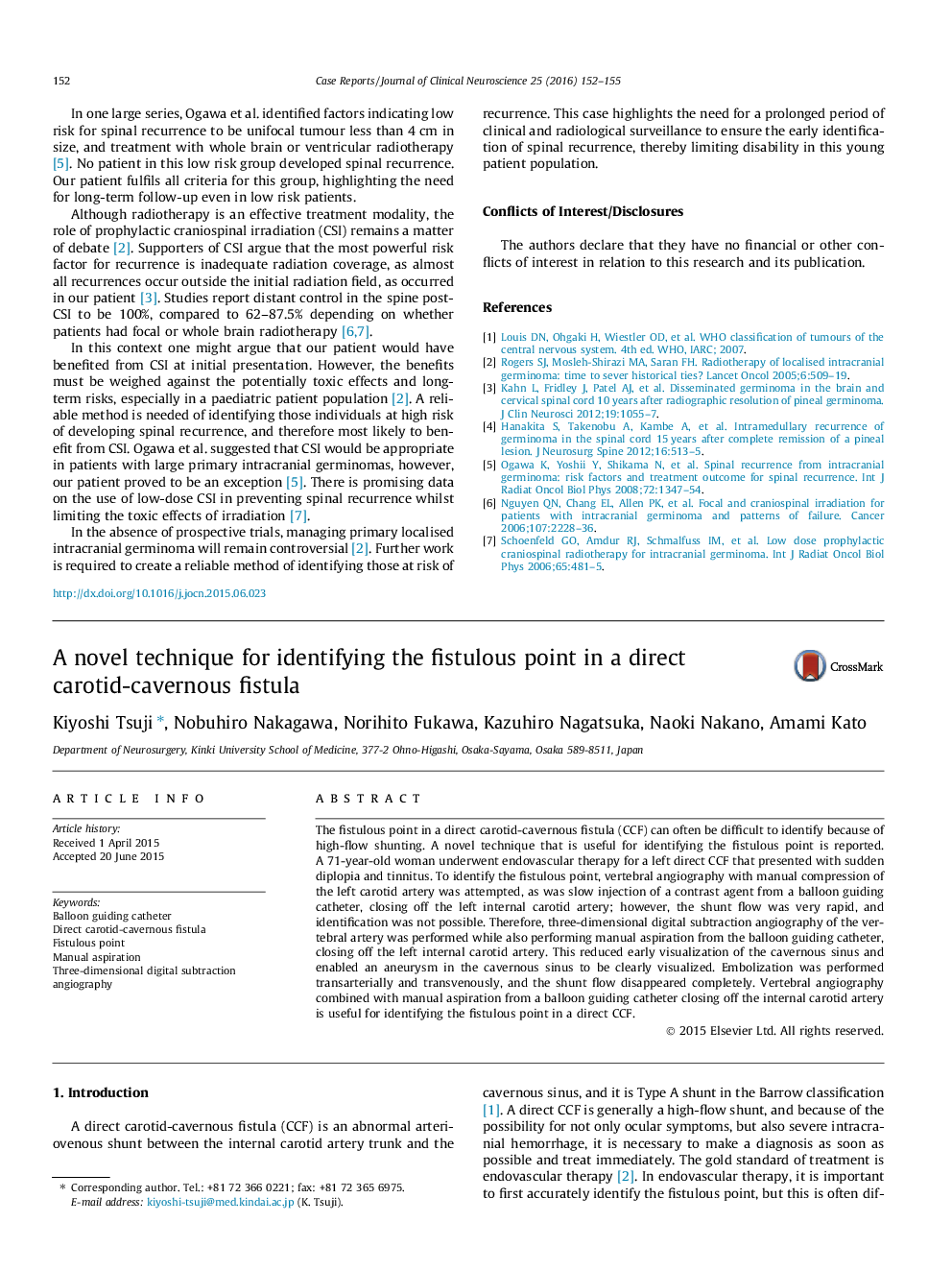| Article ID | Journal | Published Year | Pages | File Type |
|---|---|---|---|---|
| 3058564 | Journal of Clinical Neuroscience | 2016 | 4 Pages |
•It is often difficult to identify the fistulous point in a direct CCF.•We devised a new method for identifying the fistulous point.•This method reduces early visualization of the cavernous sinus.
The fistulous point in a direct carotid-cavernous fistula (CCF) can often be difficult to identify because of high-flow shunting. A novel technique that is useful for identifying the fistulous point is reported. A 71-year-old woman underwent endovascular therapy for a left direct CCF that presented with sudden diplopia and tinnitus. To identify the fistulous point, vertebral angiography with manual compression of the left carotid artery was attempted, as was slow injection of a contrast agent from a balloon guiding catheter, closing off the left internal carotid artery; however, the shunt flow was very rapid, and identification was not possible. Therefore, three-dimensional digital subtraction angiography of the vertebral artery was performed while also performing manual aspiration from the balloon guiding catheter, closing off the left internal carotid artery. This reduced early visualization of the cavernous sinus and enabled an aneurysm in the cavernous sinus to be clearly visualized. Embolization was performed transarterially and transvenously, and the shunt flow disappeared completely. Vertebral angiography combined with manual aspiration from a balloon guiding catheter closing off the internal carotid artery is useful for identifying the fistulous point in a direct CCF.
